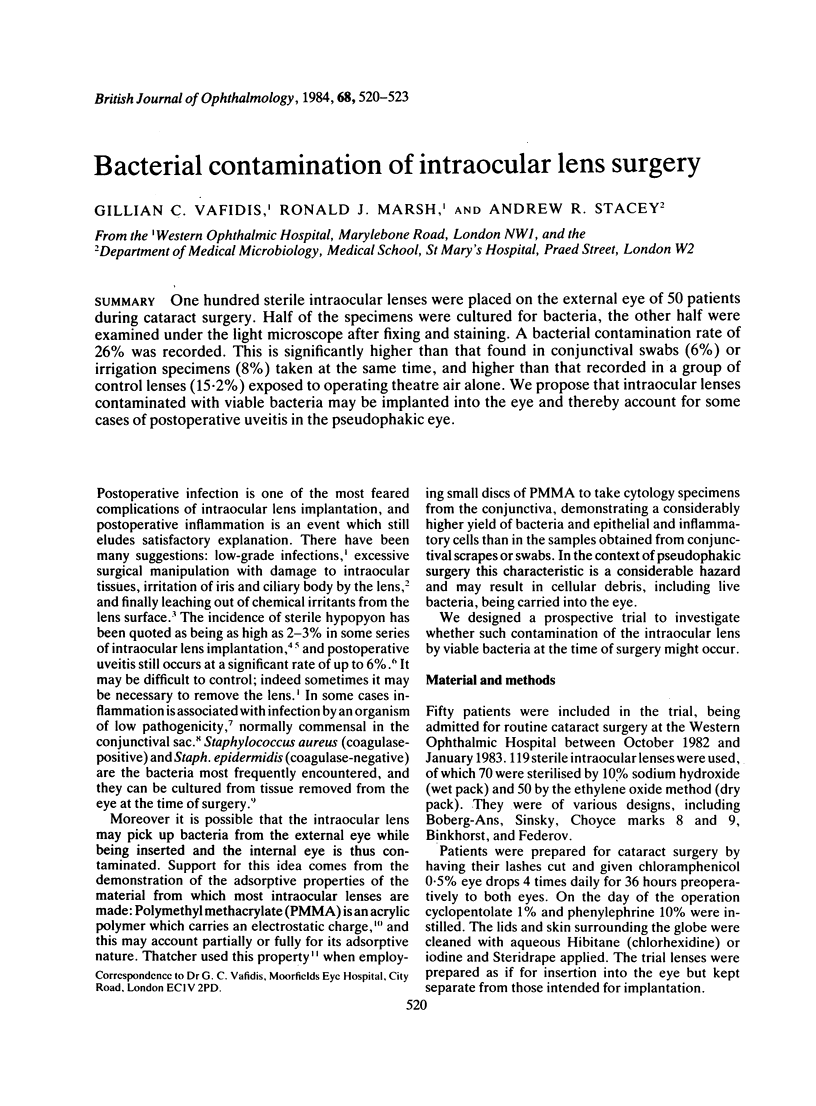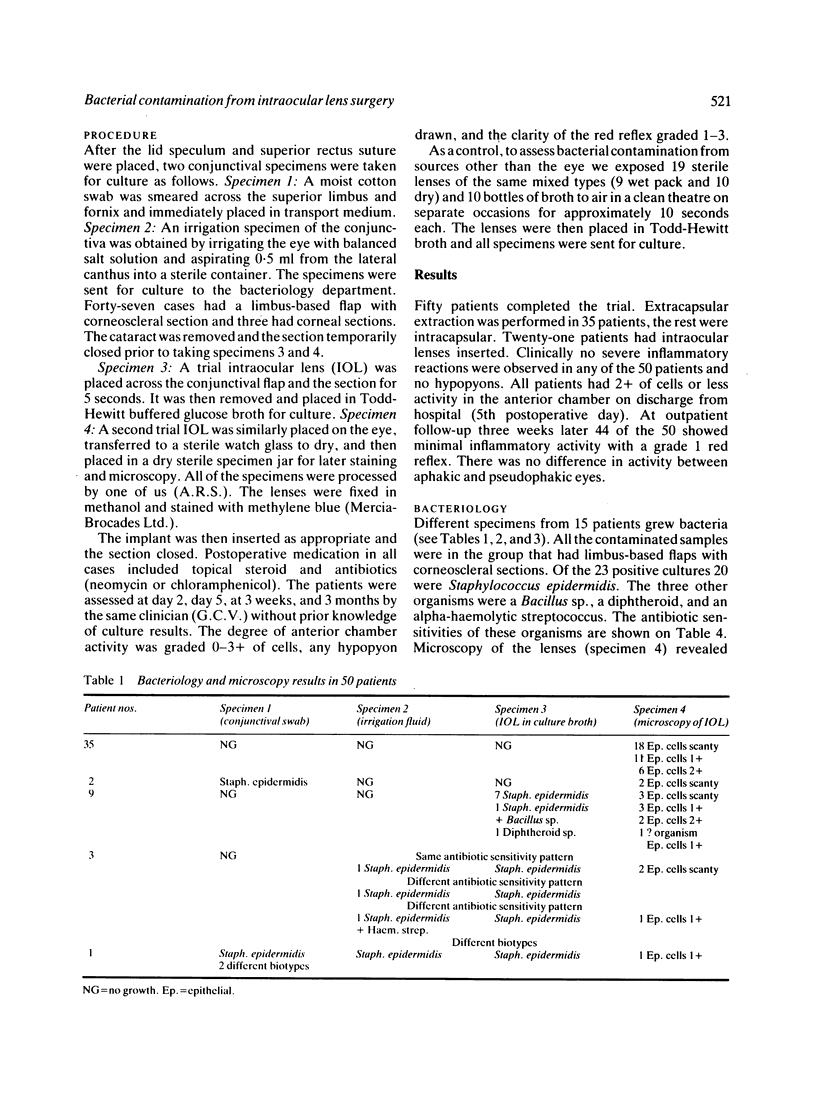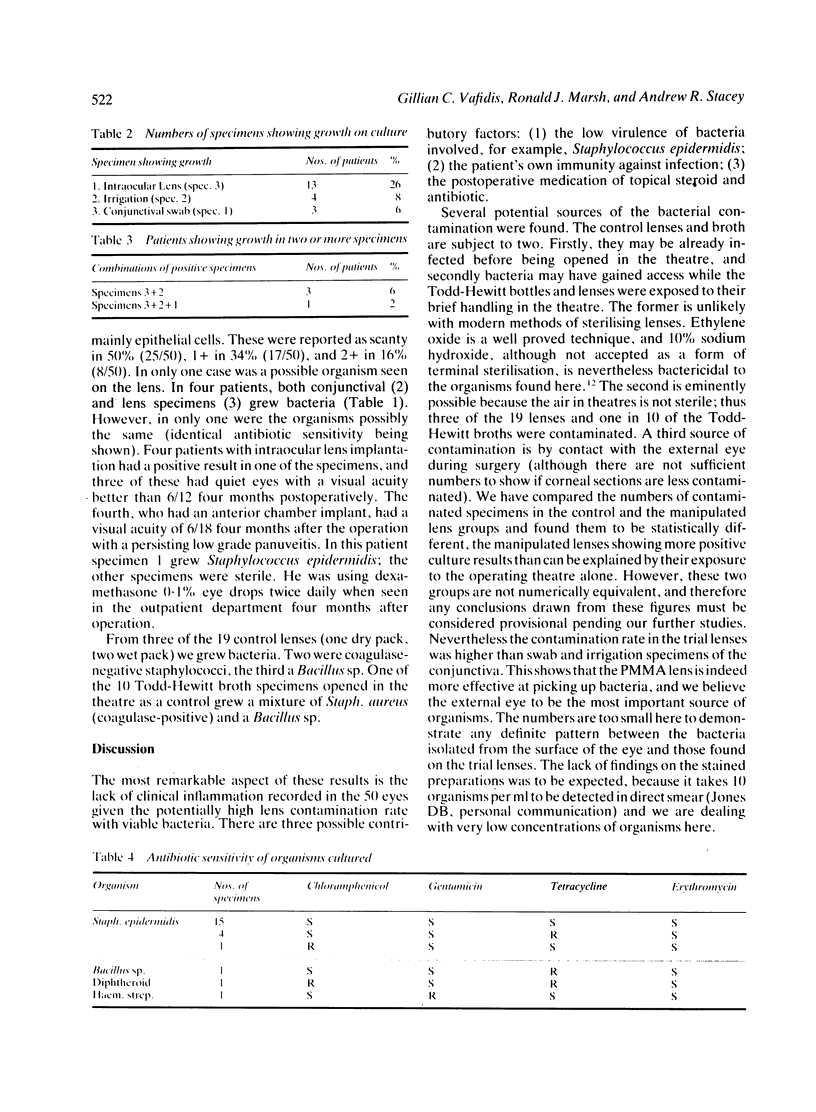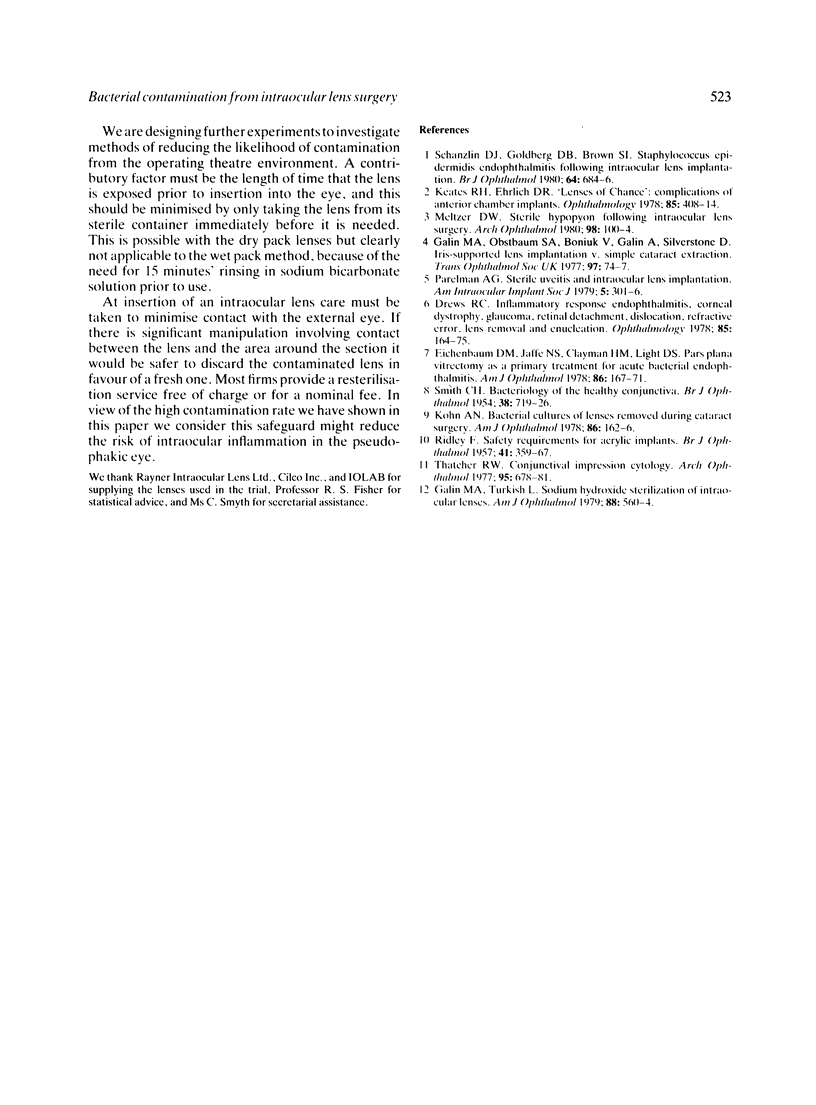Abstract
One hundred sterile intraocular lenses were placed on the external eye of 50 patients during cataract surgery. Half of the specimens were cultured for bacteria, the other half were examined under the light microscope after fixing and staining. A bacterial contamination rate of 26% was recorded. This is significantly higher than that found in conjunctival swabs (6%) or irrigation specimens (8%) taken at the same time, and higher than that recorded in a group of control lenses (15.2%) exposed to operating theatre air alone. We propose that intraocular lenses contaminated with viable bacteria may be implanted into the eye and thereby account for some cases of postoperative uveitis in the pseudophakic eye.
Full text
PDF



Selected References
These references are in PubMed. This may not be the complete list of references from this article.
- Keates R. H., Ehrlich D. R. "Lenses of chance" complications of anterior chamber implants. Ophthalmology. 1978 Apr;85(4):408–414. doi: 10.1016/s0161-6420(78)35655-4. [DOI] [PubMed] [Google Scholar]
- Schanzlin D. J., Goldberg D. B., Brown S. I. Staphylococcus epidermidis endophthalmitis following intraocular lens implantation. Br J Ophthalmol. 1980 Sep;64(9):684–686. doi: 10.1136/bjo.64.9.684. [DOI] [PMC free article] [PubMed] [Google Scholar]
- Thatcher R. W., Darougar S., Jones B. R. Conjunctival impression cytology. Arch Ophthalmol. 1977 Apr;95(4):678–681. doi: 10.1001/archopht.1977.04450040144022. [DOI] [PubMed] [Google Scholar]


